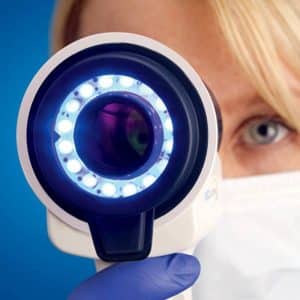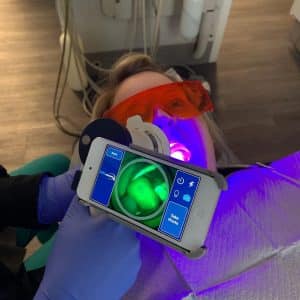Posted by: Maplewood Dental Arts in Family Dentist
April is Oral Cancer Awareness Month

At Maplewood Dental Arts, one of the core values of our practice philosophy is a preventative, proactive approach to oral health for our patients. This includes a comprehensive oral cancer screening at your regularly scheduled hygiene appointments.
According to the American Dental Association, 41,000 Americans will be diagnosed with oral and throat cancers this year. With 60% of the people in the United States visiting the dentist each year, your dental exam is the first line of defense for early detection.
Maintaining your routine dental visits at Maplewood Dental Arts allows us to monitor and alert you to any abnormalities in your mouth. Regular oral cancer screenings increase your chances of successful treatment should any be cancerous.
VELscope Technology

In addition to our thorough head, neck and oral cavity examination we use VELscope® Vx technology to enhance our screening and diagnostic capabilities at Maplewood. We recently added an adapter that allows us to capture digital imaging through an iPod Touch attached to the scope.
The VELscope® Vx handheld device emits a harmless, bright blue light which is used to inspect the mouth and tongue. The device is extremely sensitive to abnormal tissue changes and the distinctive blue-spectrum light causes the soft tissue (oral mucosa) of the mouth to naturally fluoresce.
Healthy tissues fluoresce in distinct patterns that are visibly disrupted by trauma or disease, such as neoplastic lesions, and fungal, viral or bacterial infections.
Why Early Discovery Matters?
The VELscope device is extremely sensitive to tissue changes. Its use in everyday practice can provide timely information to dentists and hygienists to enable earlier detection of abnormal tissues and provide better outcomes for patients.
Statistics show that, when discovered early, the 5-year survival rate for oral cancer patients is about 83%. Unfortunately, most cases of oral cancer are discovered in late stages, when the five-year survival rate drops to around 50%.
Changing Demographics
New research confirms that the risk factors for oral cancer have been expanded to include the Human Papilloma Virus (HPV16), in addition to tobacco use, frequent and/or excessive alcohol consumption, a compromised immune system, and past history of cancer. This changing demographic presents an unprecedented call to action for oral cancer awareness and regular screenings.
We begin screening patients at 18 years of age and help to educate them about these risk factors early so they can make more informed preventative choices for long term health.




